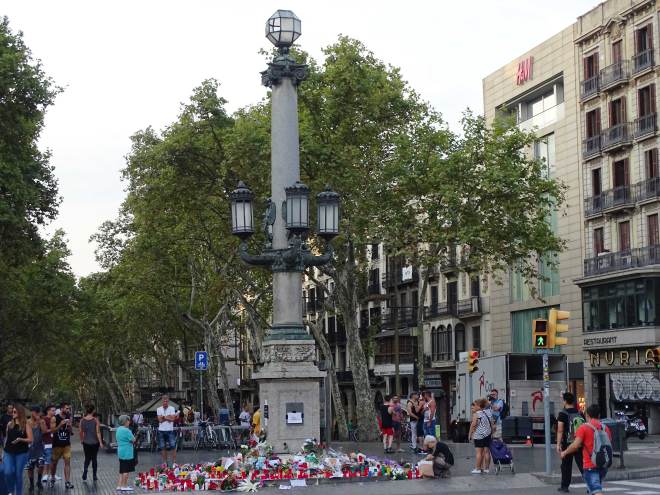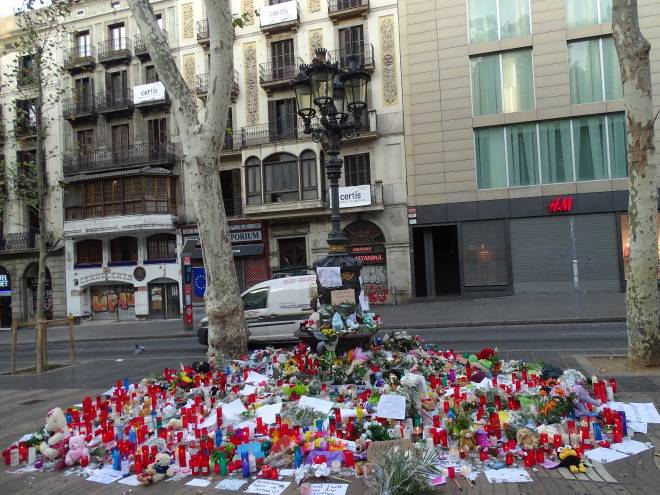After the attacks of 17, the population of Barcelona and many tourists have turned to present their respect for the victims. Flowers, candles, objects and written memories, has filled various makeshift altars across the Ramblas.
The first is located at the foot of the rostral streetlamp of Canaletas, work by Felix de Azúa Pastors (1928).



Nearby, at the foot of the mythical Fountain of Canaletas, the work by Pere Falqués (1892), found a second altar. From there, several trees host, not least than 10 shrines more.


Nearby, at the foot of the mythical Fountain of Canaletas, the work by Pere Falqués (1892), found a second altar. From there, several trees host, not least than 10 shrines more.






But, the most extensive and significant, is the altar that has been growing on the pavement designed by Miró in 1976.


“When Joan Miró (1893-1983) was approached in 1968 with a project to design a mural for the new terminal at Barcelona Airport, he not only accepted the commission but agreed to deliver three works that would serve to welcome visitors to the city on their arrival by air, land and sea. True his word, every six years he furnished a work, each one very different from the other, to greet visitors who arrived in Barcelona by air (the mural, a ceramic construction by Llorens Artigas, was set into place in 1970), by sea, with the pavement in the Pla de la Boqueria, inaugurated on 30 December 1976, and finally for those who arrived by road along the Gran Via de les Corts Catalanes, with a monumental “Woman-Mushroom” phallic sculpture capped by a moon, better known as “Woman with Bird”, situated in the former Parc de l’Escorxador, now called the Joan Miró Park. Following the artist’s wishes, the pavement Miró designed for the Pla de l’Ós or Pla de la Boqueria has not been protected or cordoned off like an exhibit in a museum, but serves in fact the same purpose as any paved area, subject to the same wear and tear and accumulation of dirt, including the chewing-gum which the city cleaning and maintenance department finds so difficult to remove” . ( Jaume Fabre, Josep M. Huertas. www.bcn.cat/artpublic)


In some points also appear expressions in memory of the performance of the services of security and medical emergencies.



In others, we can observe “artistic interventions”, some signed, some not.








No tenim por – We are not afraid

You must be logged in to post a comment.